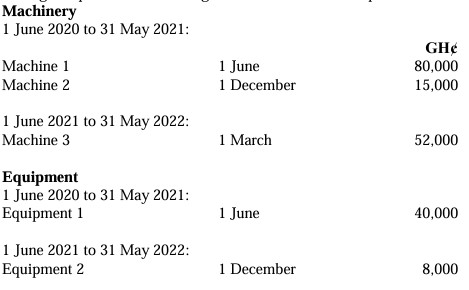a) B & C Brothers are partners sharing profits and losses equally between themselves for many years. However, they have now decided to dissolve their partnership as at 31 December 2016. Below is their Statement of financial position as at 31 December, 2016:
Statement of Financial Position as at 31 December, 2016
|
GH¢000 |
GH¢000 |
| Non-Current Assets: |
|
|
| Land and Buildings |
3,200 |
|
| Furniture and Fittings |
3,400 |
6,600 |
| Current Assets: |
|
|
| Trade receivables |
11,200 |
|
| Cash and Bank balances |
7,200 |
18,400 |
| Total Assets |
|
25,000 |
| Capital accounts: |
|
|
| B |
8,000 |
|
| C |
6,000 |
14,000 |
| Trade payables |
|
11,000 |
| Total Capital and Liabilities |
|
25,000 |
Additional information: At dissolution, the trade receivables realized was GH¢10,800,000, the land and buildings GH¢1,600,000 and the furniture and fittings GH¢3,800,000. The expenses incurred on dissolution were GH¢400,000 and discounts amounted to GH¢800,000 were received from suppliers.
Required: i) Prepare Realisation Account (5 marks)
ii) Prepare Cash Account (3 marks)
iii) Prepare Partners’ Capital Account (2 marks)
b) The objective of IAS 2 Inventories is to prescribe the accounting treatment for inventories and provide guidance for measuring and valuation of inventories. It determines the cost of inventories and subsequent recognition as an expense, including any write-down to net realizable value.
Required: i) Explain Inventories. (3 marks)
ii) Explain how inventories are measured and valued in the financial statements in accordance with IAS 2. (3 marks)
c) In order to enhance the quality of information in financial statements, business transactions are grouped into different classes or categories on the basis of their economic characteristics. The broad classes or categories are called elements of financial statements.
Required: Explain any TWO elements of financial statements in line with the IASB Conceptual Framework for Financial Reporting and identify their criteria for recognition. (4 marks)


